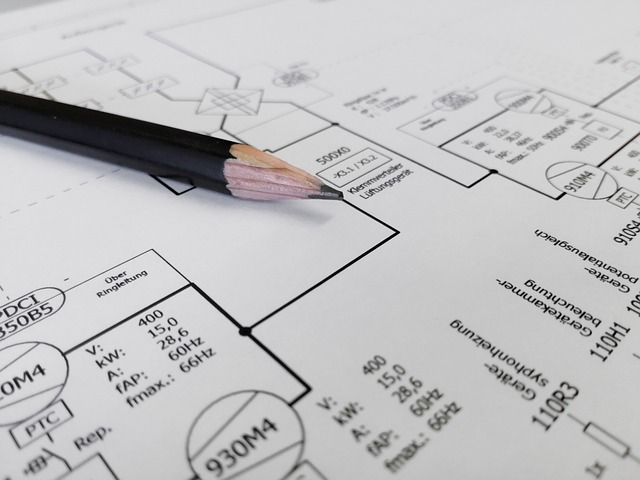To integrate new wiring or structural additions safely and efficiently, electricians must first comprehend existing systems, using tools like voltage testers and multimeters. They plan routes, install components, and test rigorously while navigating challenges in older buildings with compact wires and modern safety standards. Adhering to best practices involves inspections, proper grounding, capacity assessments, and ongoing maintenance checks to ensure a safe, reliable electrical system.
“As an electrician, integrating new structural additions with existing electrical systems is a delicate yet critical task. This comprehensive guide navigates you through understanding the foundation of your home’s wiring, selecting the right tools, and implementing a step-by-step approach for safe installation. We’ll explore common challenges, best practices, and essential tips to ensure efficiency and safety in your post-addition electrical system, ensuring a solid and secure power infrastructure.”
- Understanding Existing Electrical Systems: A Foundation for Wiring New Additions
- Tools and Equipment Essential for Safe and Effective Installation
- Step-by-Step Guide: Integrating New Wires into the Existing System
- Common Challenges and Solutions When Upgrading Electrical Infrastructure
- Best Practices for Maintaining Safety and Efficiency in Post-Addition Electrical Systems
Understanding Existing Electrical Systems: A Foundation for Wiring New Additions
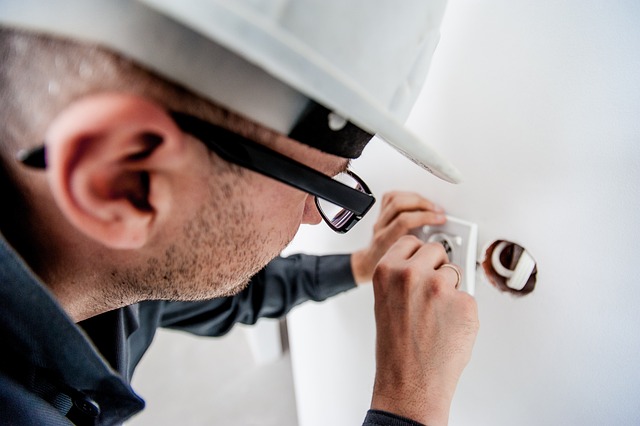
Before an electrician begins to wire new structural additions, a thorough understanding of the existing electrical system is paramount. This involves assessing the current wiring layout, identifying load centers, and determining the capacity of the main electrical panel. By thoroughly evaluating the foundation of the building’s electricity, professionals can ensure that any new wires or components are safely integrated without overloading the system.
This foundational knowledge allows electricians to make informed decisions about where to strategically place new circuits, how to manage power distribution, and what upgrades might be necessary. It’s crucial for maintaining the safety and efficiency of both the existing and updated electrical systems, ensuring a smooth transition that meets modern standards.
Tools and Equipment Essential for Safe and Effective Installation

When tackling new structural additions to existing electrical systems, a qualified electrician requires a carefully curated set of tools and equipment to ensure safe and effective installation. This includes voltage testers for precise measurements, wire strippers to prepare cables neatly, and pliers for secure connections. Additionally, cable ties, connectors, and insulators are essential to maintain the integrity of the wiring.
A multimeter is another invaluable tool for electricians, allowing them to test continuity, voltage, and resistance. Proper protective gear such as gloves and safety goggles is also crucial for shielding against electrical hazards. These tools empower electricians to navigate complex installations seamlessly, ensuring both the functionality and safety of the new structural additions.
Step-by-Step Guide: Integrating New Wires into the Existing System
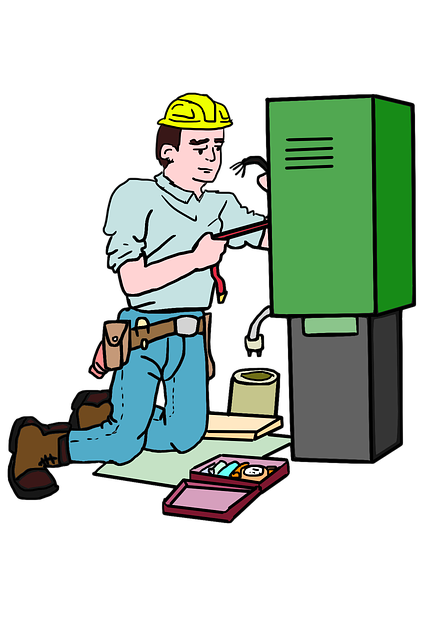
Integrating new wires into an existing electrical system requires careful planning and precise execution, a task best handled by a qualified electrician. Here’s a step-by-step guide to ensure a smooth process:
1. Assess the Existing System: Begin by thoroughly examining the current wiring layout. Identify the circuits, load centers, and panel boards already in place. Understanding these components will help you determine the best locations for new wires. An electrician’s expertise is crucial at this stage to avoid any potential hazards or system overloads.
2. Plan Wire Routes: Based on your assessment, map out the most efficient routes for new wiring. Consider factors like accessibility, distance, and the type of equipment being connected. This step demands meticulousness to guarantee both functionality and safety.
3. Prepare Terminals and Connectors: Gather appropriate connectors, terminals, and splices needed to join the new wires to the existing system. Ensure these components are compatible with your wiring and meet all necessary safety standards. Proper preparation here prevents issues down the line.
4. Install New Wiring: Carefully pull the new wires through the planned routes, using tools like wire strippers, pliers, and cable clamps as needed. Connect the wires to the designated terminals or connectors, ensuring tight and secure bonds. This meticulous process demands attention to detail.
5. Test and Verify: Once the new wiring is in place, test the system thoroughly. Check for proper circuit activation, voltage levels, and current flow. Verify that all safety mechanisms are operational. Testing ensures the new wires integrate seamlessly without compromising the existing system’s integrity.
Common Challenges and Solutions When Upgrading Electrical Infrastructure
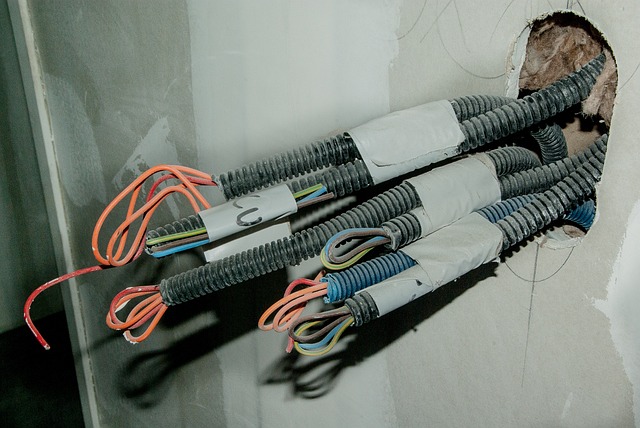
When an electrician embarks on upgrading an existing electrical system, they often face common challenges that require thoughtful solutions. One major hurdle is balancing the need for modern, efficient wiring with the constraints of the original structural design. Many older buildings have limited space and outdated cable paths, making it difficult to accommodate new wires without extensive remodeling. To navigate this, electricians employ strategies like rerouting cables along exterior walls or ceilings, utilizing compact, flexible wires that can bend around obstacles, and carefully planning access points for future maintenance.
Another challenge is ensuring the safety and stability of new additions. Adding more wiring increases the load on the system, so electricians must carefully assess the capacity of the existing circuit breaker and electrical panel. Upgrading these components to handle higher loads becomes essential. Additionally, proper grounding and bonding techniques are crucial to safeguard against electrical hazards. Electricians address this by installing appropriate grounding rods and updating the building’s grounding system to meet modern safety standards.
Best Practices for Maintaining Safety and Efficiency in Post-Addition Electrical Systems
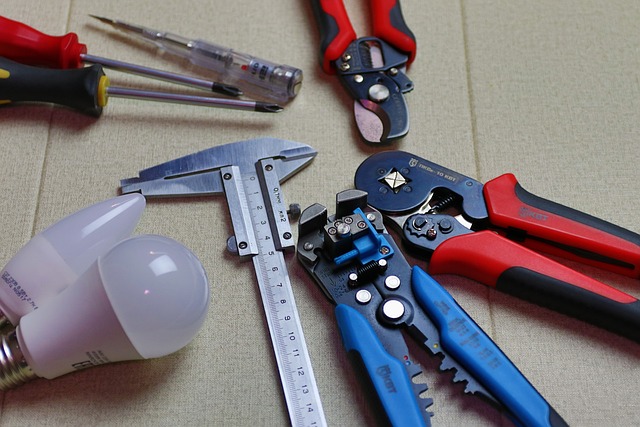
When integrating new wires into existing electrical systems, adhering to best practices is paramount for both safety and efficiency. A qualified electrician should always inspect the area before beginning any work, ensuring that all necessary safety protocols are in place. This includes assessing potential hazards, checking for proper grounding, and verifying that the system can accommodate additional load without compromising integrity.
Regular maintenance checks after structural additions are crucial. This involves inspecting connections for loose or damaged wires, ensuring insulation remains intact, and testing circuit breakers to confirm they’re functioning correctly. Keep records of all maintenance activities and upgrades to facilitate future reference. By implementing these practices, electricians can maintain a safe, efficient, and reliable electrical system long after new structural additions are incorporated.
Integrating new wires into existing electrical systems is a complex yet essential task for any electrician. By understanding the foundation of the current setup, utilizing the right tools and equipment, and following a structured approach, one can successfully add structural additions while maintaining safety and efficiency. Navigating common challenges and adopting best practices ensures that the upgraded system not only meets current demands but also anticipates future needs, ensuring a reliable and robust electrical infrastructure.
